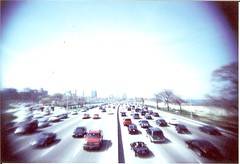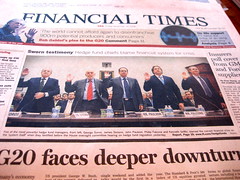Bernie’s Transportation Communications Newsletter – March 06, 2009
Friday, March 6, 2009 — ISSN 1529-1057
ITS America Announces Student Essay Competition – Sponsored by Southwest Research Institute
One of the highlights of ITS America’s 2009 Annual Meeting is the Student Essay Competition. We are pleased to announce a call for entries for the 2009 Student Essay Competition, sponsored by Southwest Research Institute. The Student Essay Competition is designed to encourage student interest and future participation in the development of Intelligent Transportation Systems and solutions. Three winners will be honored in conjunction with the Best of ITS Awards during an awards ceremony on Monday, June 1, 2009, at the Gaylord National Resort & Conference Center in National Harbor, MD – inside the Washington DC metropolitan area. The deadline to submit entries is April 3, 2009. For full entry guidelines and essay topics for this competition, please click here. If you have further questions, please contact Edgar Martinez at emartinez@itsa.org or (202) 721-4223.
CAMERAS
1) Panel Votes to End Arizona Photo-Radar System
Link to Capitol Media Services story:
http://www.azstarnet.com/metro/283088
MARITIME
2) EU Launches Maritime Spatial Planning Workshops
Link to story in Maritime Journal:
3) Aboard the US Navy’s High-Tech Pioneer, the USS Freedom
Link to story and video in Computerworld:
TRANSIT
4) CityRail Puts Brakes on iPhone Timetable App
Link to story in the Brisbane Times:
Link to Transit Sydney app: http://www.funkworks.com.au/transit-sydney/
VEHICLES
5) TRL Consortium Unveils Sentience Vehicle
Link to story in Traffic Technology International:
http://www.traffictechnologytoday.com/news.php?NewsID=11117
6) Smart Cars
Link to video on PBS’s Blueprint America:
http://www.pbs.org/wnet/blueprintamerica/featured/blueprint-america-video-smart-cars/471/
Upcoming Events
PRT@LHR (Personal Rapid Transit at Heathrow Airport) – April 21-23 – London
Friday Bonus
Try explaining this one to your boss (an incident which occurred Wednesday in Connecticut).
http://www.courant.com/media/photo/2009-03/45387479.jpg
Today in Transportation History
2004 **5th anniversary** – The Lady D, a water taxi, overturned in Baltimore Harbor killing five people.
http://www.ntsb.gov/publictn/2006/MAR0601.pdf
=============================================================================================
The Transportation Communications Newsletter is published electronically Monday through Friday.
To subscribe send an e-mail to: TCNL-subscribe@googlegroups.com
To unsubscribe send an e-mail to: TCNL-unsubscribe@googlegroups.com
TCN archives: http://groups.yahoo.com/group/transport-communications
Questions, comments about the TCN? Please write the editor, Bernie Wagenblast at i95berniew@aol.com.
© 2009 Bernie Wagenblast


 The low-carbon fuel standard, if approved next month by the state’s
The low-carbon fuel standard, if approved next month by the state’s 




















